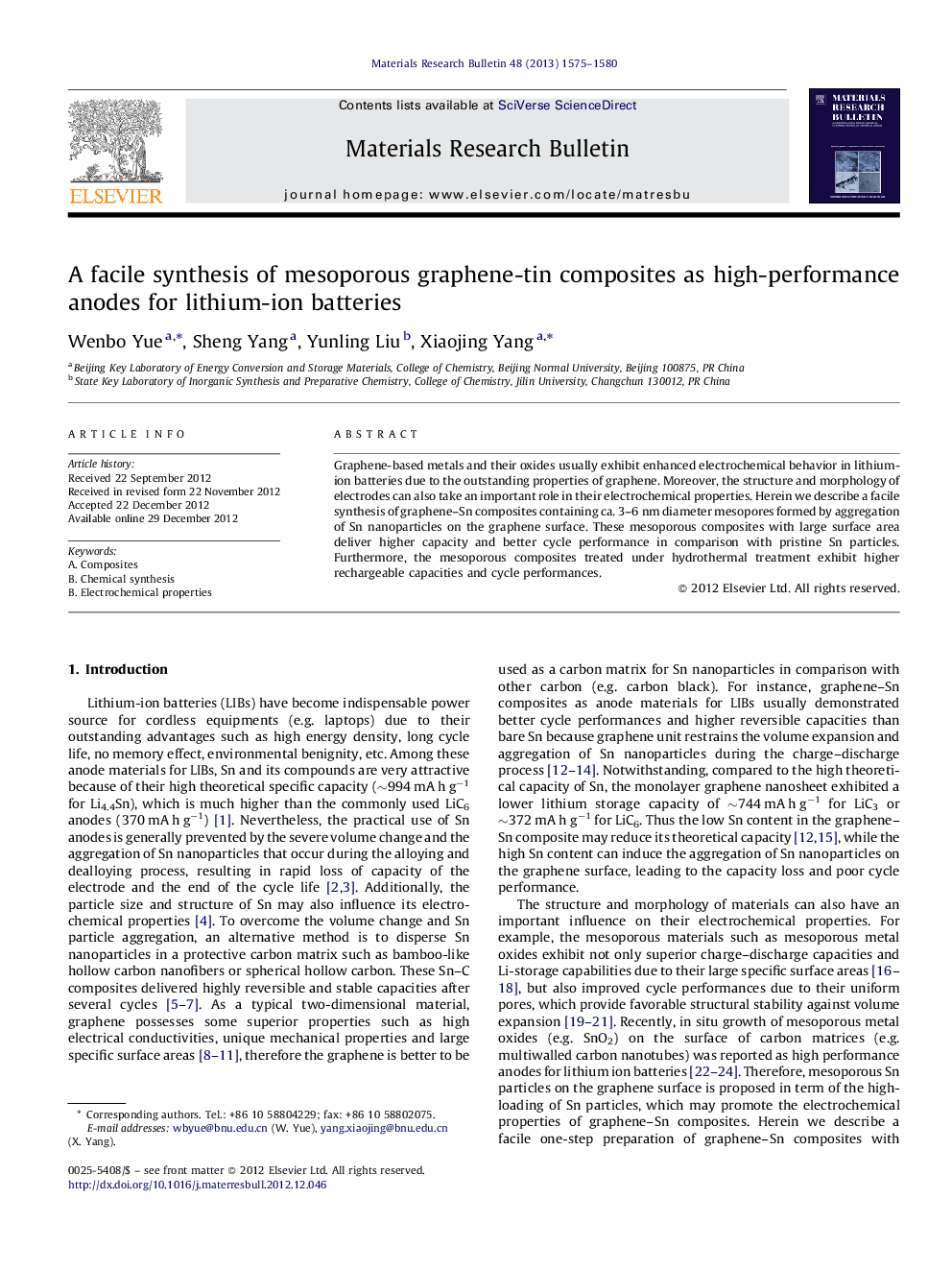| Article ID | Journal | Published Year | Pages | File Type |
|---|---|---|---|---|
| 1489077 | Materials Research Bulletin | 2013 | 6 Pages |
Graphene-based metals and their oxides usually exhibit enhanced electrochemical behavior in lithium-ion batteries due to the outstanding properties of graphene. Moreover, the structure and morphology of electrodes can also take an important role in their electrochemical properties. Herein we describe a facile synthesis of graphene–Sn composites containing ca. 3–6 nm diameter mesopores formed by aggregation of Sn nanoparticles on the graphene surface. These mesoporous composites with large surface area deliver higher capacity and better cycle performance in comparison with pristine Sn particles. Furthermore, the mesoporous composites treated under hydrothermal treatment exhibit higher rechargeable capacities and cycle performances.
Graphical abstractGraphene–Sn composites with mesoporous structure are synthesized by a facile method and explored as anode materials for lithium-ion batteries. Sn nanoparticles with diameter under 5 nm are reduced by NaBH4 solution and aggregate on the graphene surface to form the mesostructure. Compared to pure Sn particles, mesoporous graphene–Sn composites with large surface area exhibit superior electrochemical behaviors, especially after hydrothermal treatment.Figure optionsDownload full-size imageDownload as PowerPoint slideHighlights► A facile synthesis of graphene–Sn composites with mesoporous structure is proposed. ► Sn nanoparticles aggregate on the graphene surface to form the mesostructure. ► Mesoporous graphene–Sn composites exhibit improved electrochemical properties.
